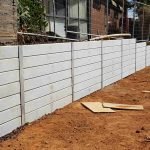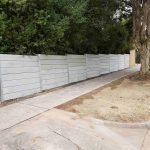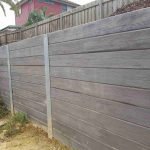Introduction
Retaining walls play an essential function in landscaping and building and construction, especially in areas vulnerable to disintegration or where modifications in elevation take place. The significance of working with a qualified retaining wall contractor can not be overstated. Whether you're considering a timber sleeper maintaining wall, a concrete sleeper retaining wall, or perhaps a brick keeping wall, comprehending the complexities involved can conserve you time, cash, and future headaches. This article delves into the complex function of a retaining wall installer near you, supplying insights that will empower property owners and residential or commercial property designers alike.
Understanding the Role of a Retaining Wall Installer Near You
When you think of landscaping, it's easy to overlook the important structural aspects that contribute to its beauty and efficiency. A retaining wall installer is not just a worker; they are experienced professionals who comprehend soil mechanics, drainage systems, and aesthetic design principles. They ensure that your keeping walls serve their function while improving your home's appeal.
What is a Retaining Wall?
A retaining wall is an engineered structure created to keep back soil and prevent disintegration. It can be made from various products such as wood, concrete, brick, or stone. The option of material frequently depends upon aspects like aesthetic appeals, expense, and ecological conditions.
Why Do You Need a Keeping Wall?
- Erosion Control: Prevents soil from washing away throughout heavy rains. Land Usage: Allows for the production of flat areas on sloped land. Aesthetic Appeal: Improves landscape design with imaginative options. Property Worth Boost: A well-designed retaining wall can elevate your home's market value.
The Value of Hiring Local Experts
Choosing a regional retaining wall specialist near you makes sure that they are familiar with regional policies, soil conditions, and environment challenges. This localized knowledge can make all the difference in creating a durable and efficient structure.
Types of Keeping Walls
Timber Sleeper Retaining Walls
Timber sleeper walls are popular due to their cost-effectiveness and natural appearance. However, they require correct treatment to resist wetness and insects.
Advantages:
- Cost-effective Aesthetic appeal Easy installation
Disadvantages:
- Limited lifespan Susceptible to rot
Concrete Sleeper Retaining Walls
Concrete sleepers provide toughness and strength. They are perfect for much heavier loads but may need expert setup due to their weight.
Advantages:
- Long-lasting Strong structural integrity Low maintenance
Disadvantages:
- Higher initial cost Limited design choices compared to timber
Brick Keeping Walls
These walls offer ageless sophistication however need more knowledge throughout installation.
Advantages:
- Aesthetic versatility Durability Fire-resistant
Disadvantages:
- Higher labor costs More complex building and construction process
Stone Keeping Walls
Natural stone offers unmatched appeal but comes with higher costs and requires experienced labor for correct installation.
Advantages:
- Unique and classy appearance Extremely durable
Disadvantages:
- High material costs Requires skilled craftsmanship
The Process of Retaining Wall Installation
1. Preliminary Consultation
Before any work starts, it's crucial to discuss your needs with your selected contractor. During this stage, they'll examine your residential or commercial property, recognize potential challenges, and recommend ideal materials.
2. Website Preparation
Proper website preparation includes clearing plants, grading the land, and ensuring adequate retaining walls installation drainage systems remain in location.
3. Product Selection
The option between lumber, concrete, brick or stone will depend on various elements including budgetary restraints and aesthetic preferences.
4. Building and construction Phase
This involves laying the structure stones or blocks according to engineering principles that make sure stability versus lateral earth pressures.
5. Backfilling & & Drainage Installation
After constructing the wall itself, it's important to backfill with gravel or sand for appropriate drain-- a crucial consider prolonging the life of your maintaining wall.
Key Considerations Before Working with a Retaining Wall Installer Near You
1. Experience Matters
Look for installers with proven experience in various types of keeping walls-- this speaks volumes about their capability.


2. Portfolio Review
Ask for instances of previous work; this will provide you insight into their style and quality standards.
3. Licensing & & Insurance
Ensure that your selected specialist has appropriate licenses and insurance coverage for peace of mind throughout the project.
FAQs About Retaining Wall Installers
Q1: Just how much does it generally cost to install a maintaining wall?
A1: Expenses vary widely based upon products utilized(timber vs concrete ), height requirements, labor charges, and website conditions but expect anywhere from$15 -$50 per square foot.
Q2: How long does it take to install a retaining wall?
A2: Normally between one day to a number of weeks depending upon size complexity; an experienced specialist will provide an approximated timeline during consultation.
Q3: Can I install my own maintaining wall?
A3: While do it yourself is possible for smaller sized tasks utilizing timber sleepers or simple styles-- professional help is recommended for larger structures due to security issues related to stability & local codes.
Q4: What allows do I need for developing a maintaining wall?
A4: This varies by area; check regional zoning laws concerning height constraints & structural requirements before proceeding with construction plans.
Q5: What type of upkeep do & these walls require?

Q6: Where can I discover credible contractors near me?
A6: Online directories like Yelp or Angie's List offer consumer reviews; word-of-mouth recommendations from neighbors are also helpful sources!
Conclusion
In essence, understanding the role of a retaining wall installer near you is essential when preparing any landscaping task involving elevation changes or erosion control options. From choosing the best material-- be it timber sleeper maintaining walls or robust concrete options-- to guaranteeing proper installation practices are followed by certified regional experts-- the result considerably impacts both performance and aesthetic worth over time.
Investing time in advance into research pays dividends later on when delighting in sturdy structures that stand strong versus nature's forces while enhancing outdoor living spaces seamlessly! Therefore constantly prioritize employing expert professionals who can effectively translate your vision into reality while sticking strictly to industry standards-- because at the end of day nothing beats peace-of-mind knowing you've made informed choices!